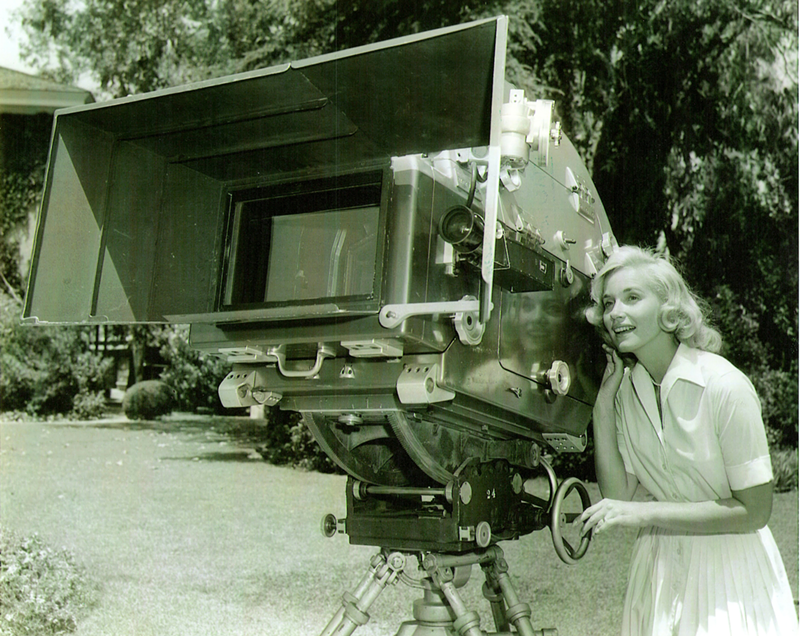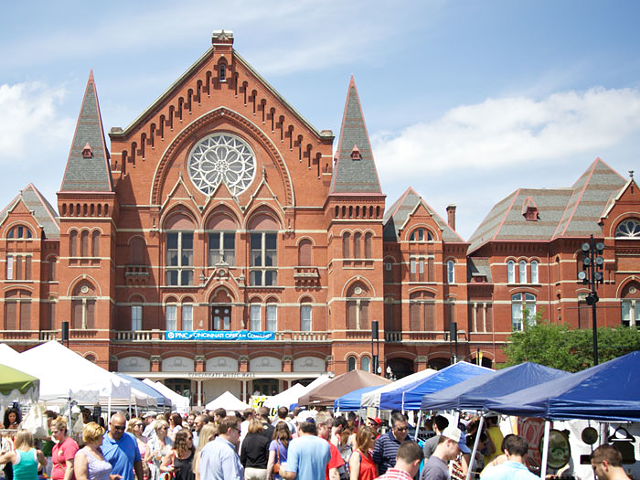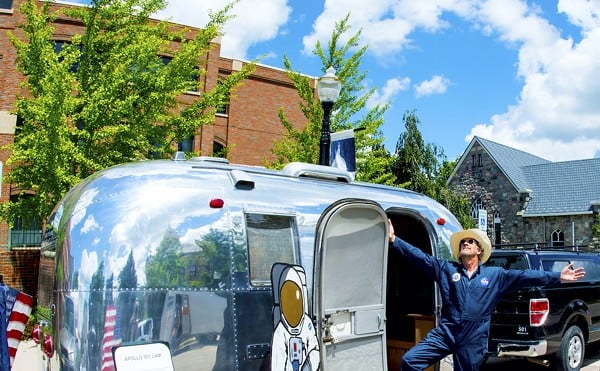Drive Time: 2 hour 15 minutes
The fascination with American film history is such that the concept of “location vacations” — visiting places where movies were filmed — is gaining in popularity. A new book by Joey Green, called Vacation on Location, Midwest, has information on seeing such sites as the old Ohio State Reformatory in Mansfield (the prison in 1994’s The Shawshank Redemption) and two picturesque ballparks in Evansville and Huntingburg, Ind., where the Rockford Peaches of the All-American Girls Professional Baseball League played in 1992’s A League of Their Own.
“The idea came about because I was traveling with my family and we went to Salzburg, Austria and took The Sound of Music tour,” Green says in an interview from his Los Angeles home. “I thought, ‘Wouldn’t it be nice to do a book on film sites all across America, picking smaller towns and focus on them?’ ”
And it can be. For an especially rewarding visit to a nearby town with a fascinating movie history, head to Danville, Ky. — about 35 miles southwest of Lexington. That’s where, in 1956, key scenes were shot for 1957’s Raintree County, one of the more fascinating if ill-fated big-budget American movie projects ever attempted. (It’s not in Green’s book because he doesn’t consider Kentucky the Midwest.)
A short trip to Danville in summer also is a chance to see a play in an outdoor theater — Pioneer Playhouse — that is itself a veritable work of folk art. It’s so distinctive it is considered a state landmark by the Kentucky Heritage Council. It also has a campground and an antique village on its 50-acre site just outside of town. (The theater season starts June 9 and runs through Aug. 26.)
The Playhouse’s history is intertwined with Raintree County’s and it has a sizeable permanent exhibit devoted to the filming of it in Danville. Also, its box office is the train station that was built for the movie and is featured in several of its more memorable scenes.
Based on a 1,000-plus-page novel and designed to be MGM’s “Northern version” of its classic 1939 Gone With the Wind, Raintree County starred some of Hollywood’s biggest stars — Elizabeth Taylor, Montgomery Clift, Eva Marie-Saint, Lee Marvin — plus such character actors as Nigel Patrick and Rod Taylor. All of them and more came to the small but lovely and historic Kentucky city for filming during a hot summer long ago.
Clift played a cocksure Indiana youth with abolitionist beliefs who falls for an emotionally troubled, pro-slavery Southern woman (Taylor) in the years before the Civil War. Later, the war’s effect on their relationship becomes the focus of this three-hour melodrama. It’s not considered a classic by any means, and in truth never found a way to satisfactorily translate its sprawling source material. But it has developed a growing following among buffs — for its politics, tragic backstory, superb production values and the acting by Taylor and Clift.
Further, for Raintree County’s Civil War scenes, MGM debuted its gigantic new Camera 65, a 65-millimeter widescreen process getting its first use in Danville. The camera itself was nicknamed “The Monster” on the set.
The Pioneer Playhouse’s founder, the late Eben C. Henson, was instrumental in getting the production to come to Danville, saying the uncluttered nearby countryside would be perfect for Camera 65’s panoramic battle scenes. His wife, Charlotte, was an extra in the production.
Besides the train station, pretty much everything else about the playhouse campus was built by Henson or recycled, salvaged or gifted. As a result, it’s quite unusual — the floor of the Indian Room is cut-up telephone poles, for instance. The playhouse has been at this location since 1957 — having started in a mental institution’s theater in 1950.
The playhouse also has a permanent Raintree County exhibit that is well researched and filled with interesting photos from the shoot. There are also correspondence, memorabilia (a postcard from the elegant Gilcher Hotel signed by Clift) and newspaper articles of the day. It’s an illuminating chronicle of how one small Kentucky town in the 1950s handled Hollywood at its most glamorous, and vice versa.
Among photos in the Playhouse’s collection are one of Taylor arriving in Kentucky to an enthused waiting crowd at Lexington’s airport, and Marvin and Clift (back to camera) taking directions for a scene outside the stately mansion in which Taylor’s character lived. (That house, at the corner of Third Street and Lexington Avenue, still looks much as it did in the 60-year-old movie.) The exhibit, which is a curated display of items in the overall collection, was assembled for a 2007 Raintree County festival organized by the late Holly Henson, Eben and Charlotte’s daughter. The family still runs Pioneer Playhouse.
The playhouse also has a living link to the days of Raintree County — Charlotte at age 86 remains active in its operation and shares her memories with visitors. During a recent tour, she posed next to a large cardboard cutout of herself in costume for a film scene, reminiscing as daughter Heather listens approvingly.
“People here loved Eva Marie Saint — they liked Elizabeth Taylor a little less,” she says. “And everyone wanted to talk to Lee Marvin.”
Her most striking remembrances center on Clift, who at one time was — along with Marlon Brando and James Dean — part of the “holy trinity” of Hollywood method actors. But while filming Raintree County in Hollywood, before the production came to Danville, he had an auto accident that caused facial injuries requiring plastic surgery to correct. When he arrived in Danville, he used alcohol. (He also reportedly needed painkillers.)
“They rented whole houses for the stars, and he got one with tall shelves to line up his whiskey bottles,” Charlotte says. “And he would hold his liquor in teacups in restaurants because we were a dry county.”
That is just one element that made Raintree County ill fated. The Bloomington, Ind. author of the 1948 novel on which it’s based, Ross Lockridge Jr., committed suicide shortly after its publication. While MGM had purchased rights at the time of the book’s publication, it took years to mount the expensive production. And then there was the tepid response. It received but four Oscar nominations — costume design, art direction, score and Taylor’s acting. That’s compared to Gone With the Wind’s 10 wins out of 13 nominations.
“They were replacing Gone With the Wind and it didn’t work,” says Robert A. Powell, a Danville historian who has written Pioneer Playhouse: A Kentucky Treasure.
But it still is a big winner in Danville.






